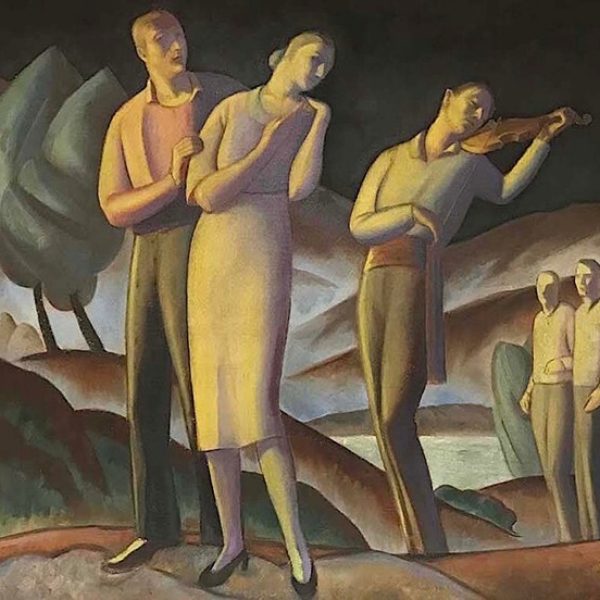Davenport Griffen
b. 1894, Millbrook, NY - d. 1986, San Rafael, CA
Trained initially as an engineer, earning his BS at Iowa State College at Ames, in 1918, Davenport Griffen worked for the Army Corps of Engineers to supplement his income as an artist. He came to Chicago to study at the Academy of Fine Arts, and at the School of the Art Institute of Chicago (SAIC), in the early 1920s, and taught life drawing and lithography at SAIC from 1927 to 1930. Griffen’s small painting entitled, Railroad Station (now catalogued as Sleep), showing the barren waiting room of a train station was shown at the 1930 Chicago and Vicinity exhibition at the Art Institute, received the Logan prize, and was purchased by the museum. Griffen’s work was regularly exhibited at important museums nationwide throughout the 1930s. He executed murals for the 1934 Century of Progress Fair, and was appointed to the mural division of the Illinois Art Project. His extant post office murals can be seen in rural Flora and Carmi, Illinois.
A hallmark of Griffen’s style, seen in his prints, paintings, and murals, is the geometric simplification of form, derived from a number of sources, but made fully his own. One can detect the influence of both Jose Clemente Orozco’s more muscular expressionist interpretation of Cubism, as well as the more decorative modernist style of Griffen’s instructor at the Art Institute, John Warner Norton. Griffen defined his philosophy of art eloquently in J. Z. Jacobson’s Art of Today, Chicago:
My initial impulse is due to realities or, more often, reminiscence of reality; but I am not concerned with realities as they exist in nature but as they grow in my picture by the demands of form (personal design). The better I sense the demands of form and the more vehemently I answer them and the less I allow my knowledge of natural forms to interfere, the more successful I am.
Daniel Schulman
References
Griffen, Davenport. Pamphlet file P-11165. Ryerson Library. Art Institute of Chicago.
Jacobson, J. Z. Art of Today, Chicago, 1933. Chicago: L. M. Stein, 1933. pp. 71, 142–43.
